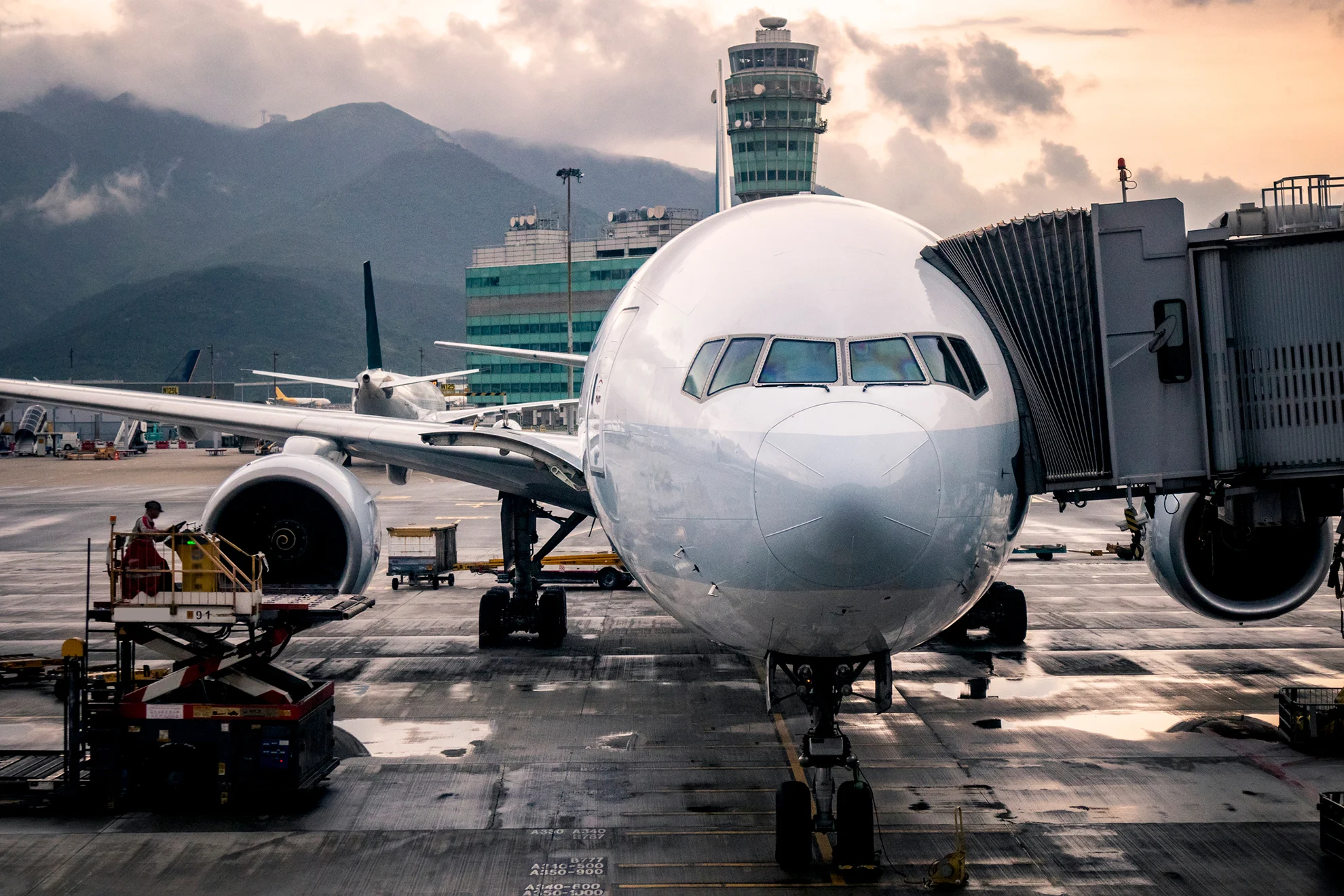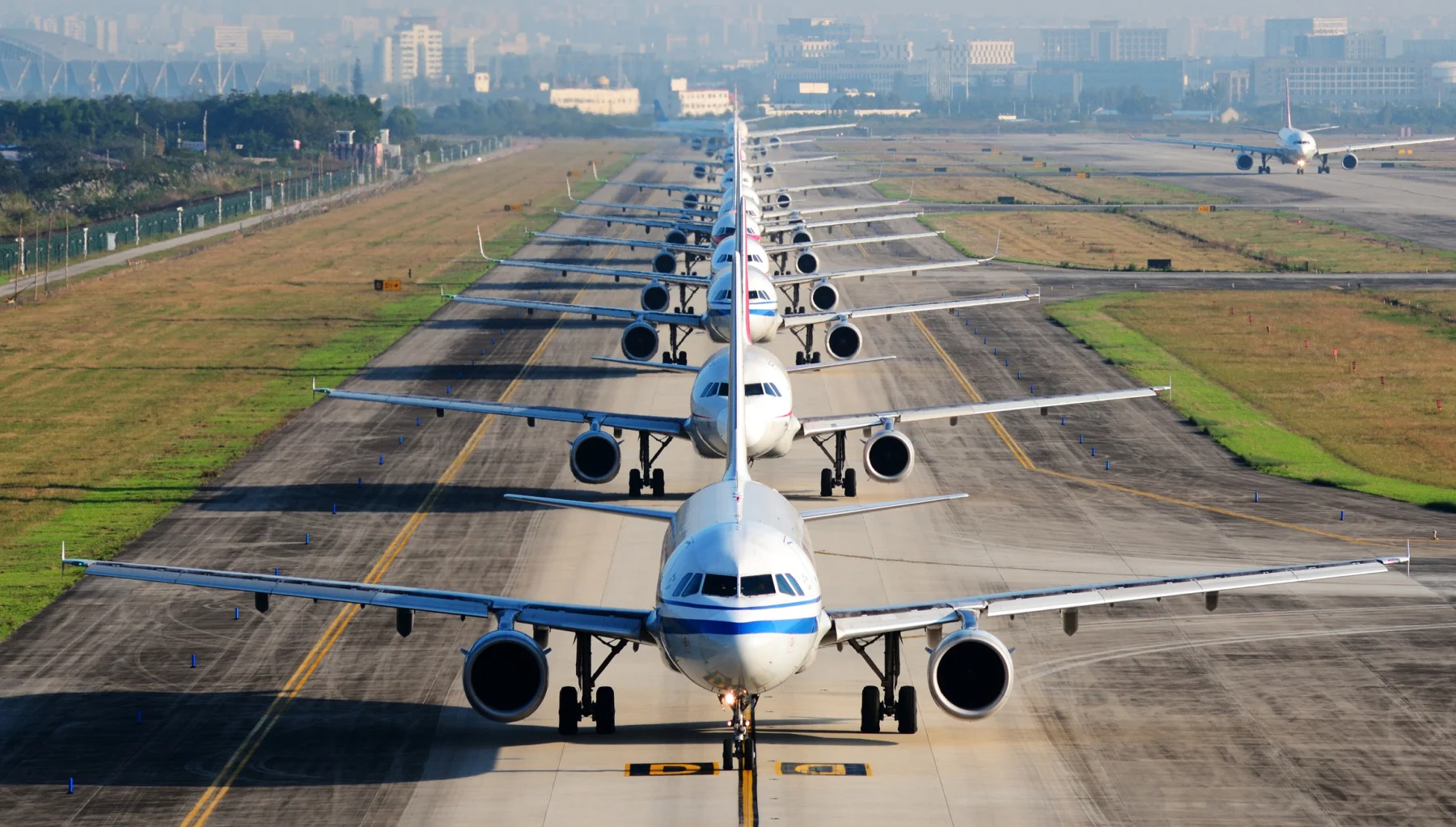
Planes release way too much pollution. Here's how that could change
Biofuels, hydrogen, and aircraft running on batteries are expected to play an increasingly critical role in powering the aviation sector in the coming decades.
Planes are amongst the most carbon-intensive forms of travel and significant technological hurdles lie ahead on the path to decarbonizing the aviation industry.
It’s hard finding an energy source that has the same abilities as traditional jet fuel to propel a 100,000+ pound aircraft through the sky for several hours, whereas other smaller vehicles like cars have seen considerable advancements in sustainability.
Despite a dramatic drop in global air passenger numbers during the COVID-19 pandemic, passenger air travel is expected to surpass 2019 levels by 2024 and then grow in the coming decades. The impending surge in emissions from this sector is concerning to both policymakers and environmentalists as roughly five per cent of current anthropogenic climate change can be attributed to global aviation.
Before the pandemic, the International Civil Aviation Organization (ICAO) stated that emissions from international aviation could triple by 2050 compared to levels seen in 2015. However, ICAO also states that 100 per cent of international aviation jet fuel demand could be met sustainably.

Airplanes in line on the runway waiting for take off in Chengdu, China. (Jingying Zhao/Moment/Getty Images)
“There are two huge things that have to happen. One is we have to transition away from burning fossil fuels, just like other sectors, and the other is we have to improve the energy efficiency of the aircraft. With those two things together, we can greatly reduce our effect on climate change,” David W. Zingg, University of Toronto professor of Computational Aerodynamics and Sustainable Aviation, said to The Weather Network.
Biofuels, hydrogen, and hybrid-electric aircraft are all possible technologies that could significantly lower emissions. Of these options, Zingg says that biofuels are perhaps the most promising energy source since they are already being used in a number of aircraft and vehicles.
In 2018, ASTM International approved jet fuel containing a blend of up to 50 per cent ethanol could be used to fly aircraft. Ethanol is a common biofuel and is made from crops like corn or sugarcane, which are specifically grown to be fermented and processed into a liquid that can be burned for energy. These types of crops can be grown in large quantities across many parts of the world, but there are limitations to this resource.

NREL Post Doc Brenna Black draws samples from a tubular bag photobioreactor, to inoculate new growth media, at the Algal Research Lab at the National Renewable Energy Laboratory (NREL) in Golden, Co. (Dennis Schroeder/NREL/U.S. Department of Energy)
Algae is another feedstock for biofuels and scientists from Texas A&M University are using artificial intelligence to harvest algae at a record-breaking pace by calculating light penetration, growth, and optimal density. Using their new technology, the researchers were able to cultivate a biomass yield of 43.3 grams per square metre per day, which far exceeds the U.S. Department of Energy’s target range of 25 grams per square metre per day.
Zingg noted concerns about growing crops for energy instead of human consumption, the amount of land area that would be converted to cultivate the crops, and the emissions associated with transporting the ethanol.
Additionally, the International Energy Agency (IEA) states that the 15 million litres of biofuels that were used that year accounted for less than 0.1 per cent of total fuel consumption in the aviation sector in 2018.
Hydrogen power is another up-and-coming energy source that is not only being scouted for powering aircraft but also cars, trucks, and trains. Hydrogen fuel is created when energy, ideally renewable, is used to separate hydrogen molecules from the compounds it is found in — such as splitting the hydrogen atoms from the carbon atom in methane or removing hydrogen atoms from the oxygen atom in water.

A liquid hydrogen tank at Launch Pad 39B at NASA’s Kennedy Space Center that has supported space shuttle launches for 30 years. It is stored at -257.8°C because it can only be liquefied at extremely low temperatures. (Kim Shiflett/NASA)
When paired with an electric motor, a hydrogen fuel cell is up to three times more efficient than an internal combustion engine powered by gasoline, but there are a number of critical drawbacks. Storing and transporting hydrogen is highly complex, partly due to how flammable it is, and there is simply not much infrastructure that exists for this energy type.
The amount of energy needed to strip the hydrogen atoms from the compounds is high since this element does not exist on its own in nature. In fact, the amount of energy required to separate hydrogen atoms is greater than the energy created when the hydrogen is converted into an energy source.
Despite these limitations, a number of international companies are making big bets on hydrogen power. Commercial flights that release zero greenhouse gas emissions could be an option for travellers by 2035 according to Airbus, an aerospace company that designs aircraft for both the military and civilians.

An illustration of a ZEROe aircraft from Airbus in flight. (Nico De Pasquale Photography/Airbus)
In a press release, the company states that it aims to develop the first zero-emission commercial aircraft by 2035 and will achieve this through hydrogen technology. Airbus announced three concept aircraft that will utilize liquid hydrogen that is combusted with oxygen in modified gas turbine engines.
Zingg pointed out that while hydrogen power could have promising results in the future, it is “still experimental and in the early stages” for aircraft.
“The aircraft introduction cycle in aviation is long, so if you start trying to design a hydrogen-powered aircraft and have it ready to go by 2035.... That's extremely ambitious,” Zingg stated. “In the meantime, we'll have emitted a whole bunch more carbon dioxide that's going to stay there in the atmosphere, so I think biofuels is a short- to medium-term solution.”
Short-distance flights are also an area where technological developers are planning to innovate with batteries.
One solution is the electric flying vehicle designed by Jetson Aero, which became available for purchase in the U.K. in early 2022. The “personal electric aerial vehicle” is powered by a high discharge lithium-ion battery that has a flight time of 20 minutes with a top level flight speed up to 102 km/h.
Regent, a start-up company in Boston, designed an electric seaglider that aims to transport people over bodies of water so they can beat city traffic in a sustainable way. The seaglider is powered by a 100 per cent electric propulsion system and has a flight time of 20 minutes with a maximum flight speed up to 102 km/h. The company aims to transport commercial passengers by 2025.
Whether one of the aforementioned energy sources takes off and dominates or, the more likely scenario, a blend of resources are used to lower emissions in the aviation industry, what is abundantly clear is that substantial policies supporting the green transition and significant investments are needed to further develop existing technologies.
“I think we need a carrot and a stick from policymakers and from governments. So the stick is the regulations. But the carrot has to be funding support, either whether it's direct to the industry or indirect by supporting government labs, like the National Research Council of Canada, NASA, university research, so those organizations can do research funded by the government that can de-risk things and reduce the costs to bring these things to market. So I think the government has an enormous role in this,” said Zingg.
Until then, Zingg emphasizes that individuals can have an important role to play and can make sustainable decisions while travelling.
“If you want to fly, but you are concerned about the impact of flying and climate change, then at least try to choose the flight that will have the least impact if you can, if you can get that information.”
Thumbnail credit: DuKai photographer/Moment/Getty Images












